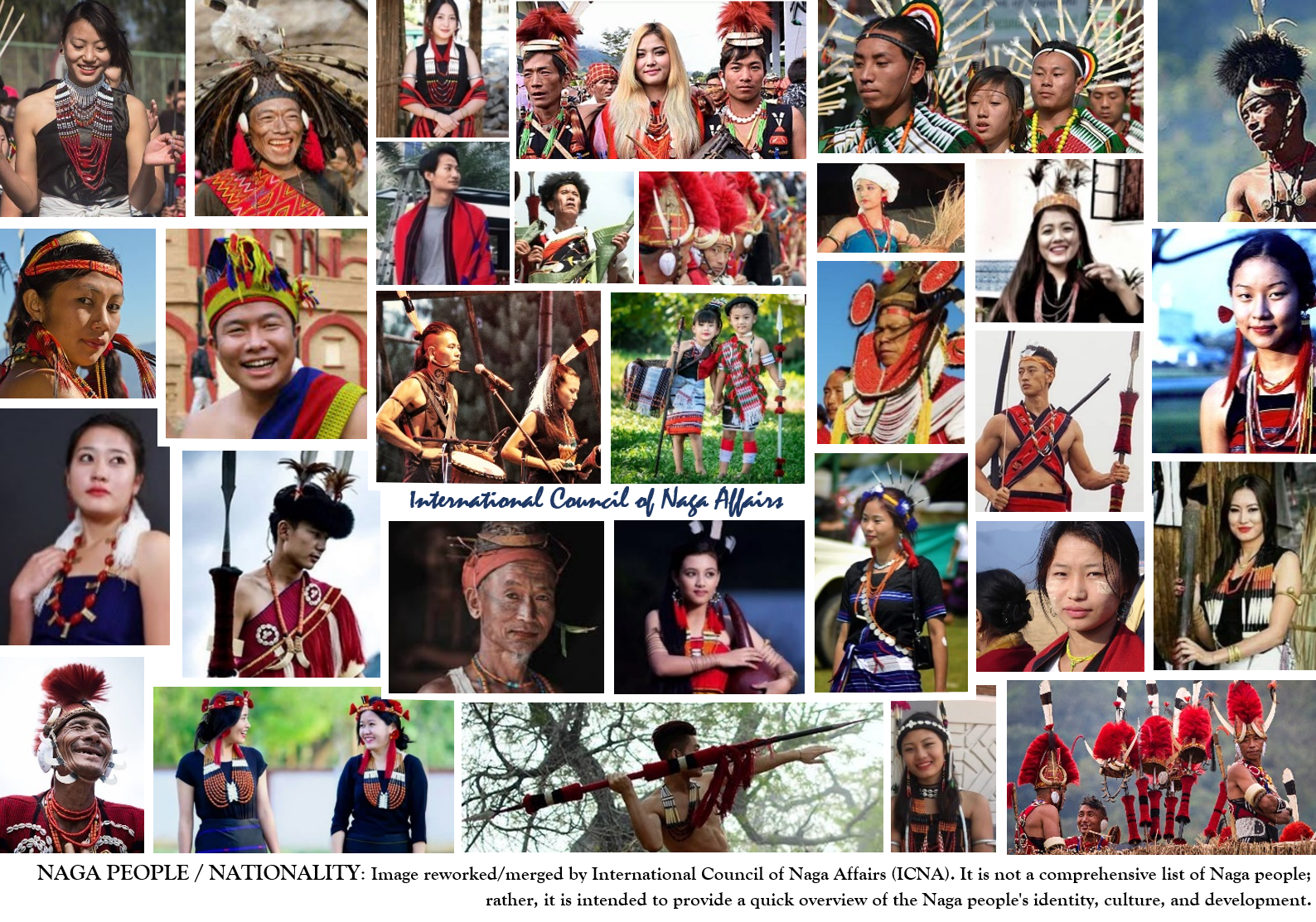Introduction, The Naga People
The Naga people’s homeland/areas are in India’s current north-eastern region and Myanmar’s north-western region. The origin of the word “Naga” has been explained as meaning “hillman/mountain dweller”, but it has also been linked to “young man” or “warrior,” and it was mysteriously mentioned as a “realm of naked” in Ptolemy’s “Geographia” around 150 A.D. by a Greek geographer named Claudius Ptolemy. Some scholars believe the Nagas were an offshoot of groups descended from the central Asian plateau due to strange cultural and linguistic coincidences across the Pacific, East, and South-East Asia. However, based on oral traditions, many Naga ethnic groups believed that their ancestors migrated from present-day China. In Chinese (Mandarin), the Nagas are known as 那加人(Nàjiā rén).
The Nagas are known for their labor-efficient slash-and-burn rice cultivation, making social and cultural patterns explicit through ornamentation and display, revealing social and ritual status through color and pattern in material culture, carved and thatched houses, youth dormitories, woven cloths, wooden carvings, body tattoos, songs, dances, and distinctive hairs. Many observers and administrators admired the Nagas’ personal loyalty and candor.
Other notable Naga people (society) characteristics include the Naga political systems, which range from autocratic chiefs to almost pure democracy, the Nagas ability to adapt in a harsh terrain, the Nagas concern with death and the human skull, the erection of massive stones dragged through the jungle by teams of villagers and erected as the culmination of grand ‘feasts of merit’ to celebrate Furthermore, in the past, every aspect of Naga life had a ritual component, from simple household and economic tasks to dancing and feasting, all of which had a mystical or religious significance. The spirits that ruled Naga life, such as disease, human and crop fertility, and rain, demanded constant attention.
The Naga people, like everyone else, are undergoing rapid change. This is not a new phenomenon, as many societies around the world have experienced similar circumstances: the impact of trade and improved communications has resulted in the import of many new novelties. Other changes have resulted from conversion to Christianity: the emphasis on personal salvation has introduced a new individualism in place of the former community spirit, hymns have replaced old traditional songs, dances that celebrated head-hunting events, a turn away from the land, and a desire for white-collar jobs.
List of Naga People:
Angami
Ao
Chakhesang
Mao
Maram
Poumai
Tangkhul
—-
Content Information: “Introduction, The Naga People” – Written and compiled by the International Council of Naga Affairs (ICNA) from various sources, including The Nagas; An Introduction, which can be found in Cambridge University’s digital collection.
Information on the Featured Image: The International Council of Naga Affairs (ICNA) has reworked/merged the image. The reworked/merged image in the featured image is not a comprehensive list of Naga people; rather, it is intended to provide a quick overview of the Naga people’s identity, culture, and development.
Featured Image Copyright: The image was gathered from a variety of sources, including Wikipedia, Facebook, Pinterest, F.A.M.Welman, Dylan, and Instagram.
NOTICE: There are approximately 66/67 ethnic Naga groups. We only listed the Naga people’s nationality (ethnic Naga group) who had sent us a brief introduction. We welcome brief information (less than 1500 words) about each Naga people’s nationality/ethnic group. Please send the write-up submission to submissions@nagaaffairs.org with the subject line “For Naga People Listing.”

